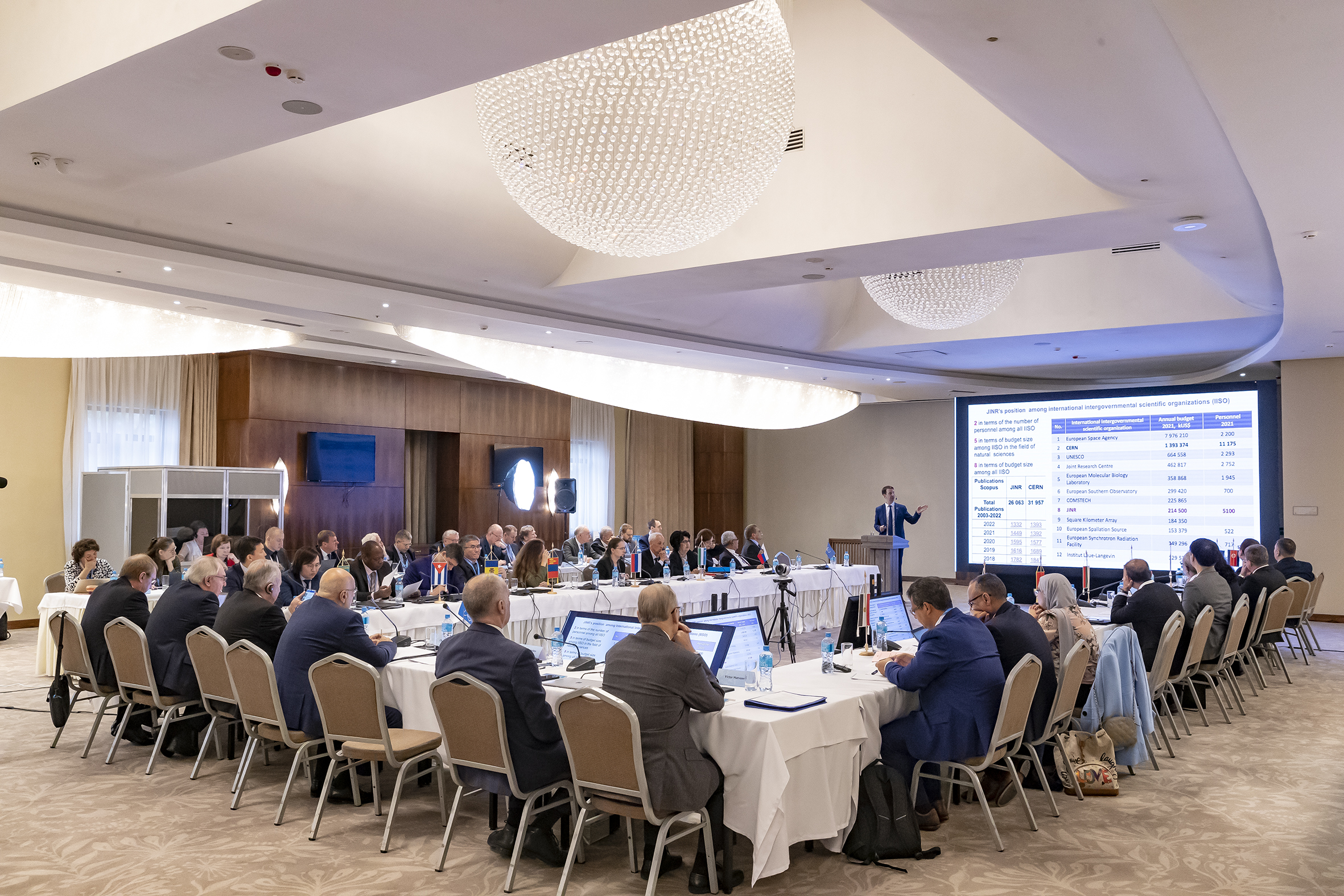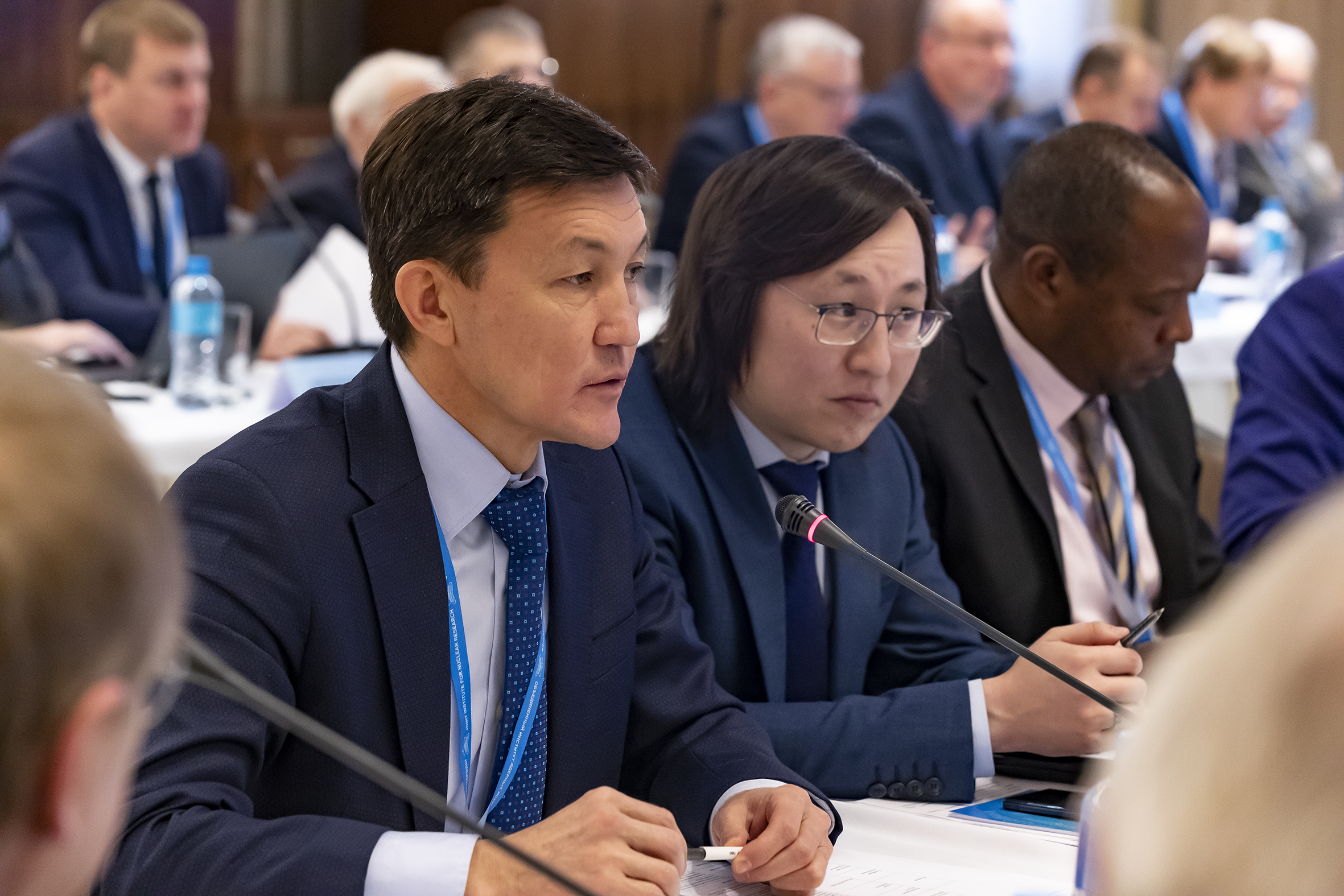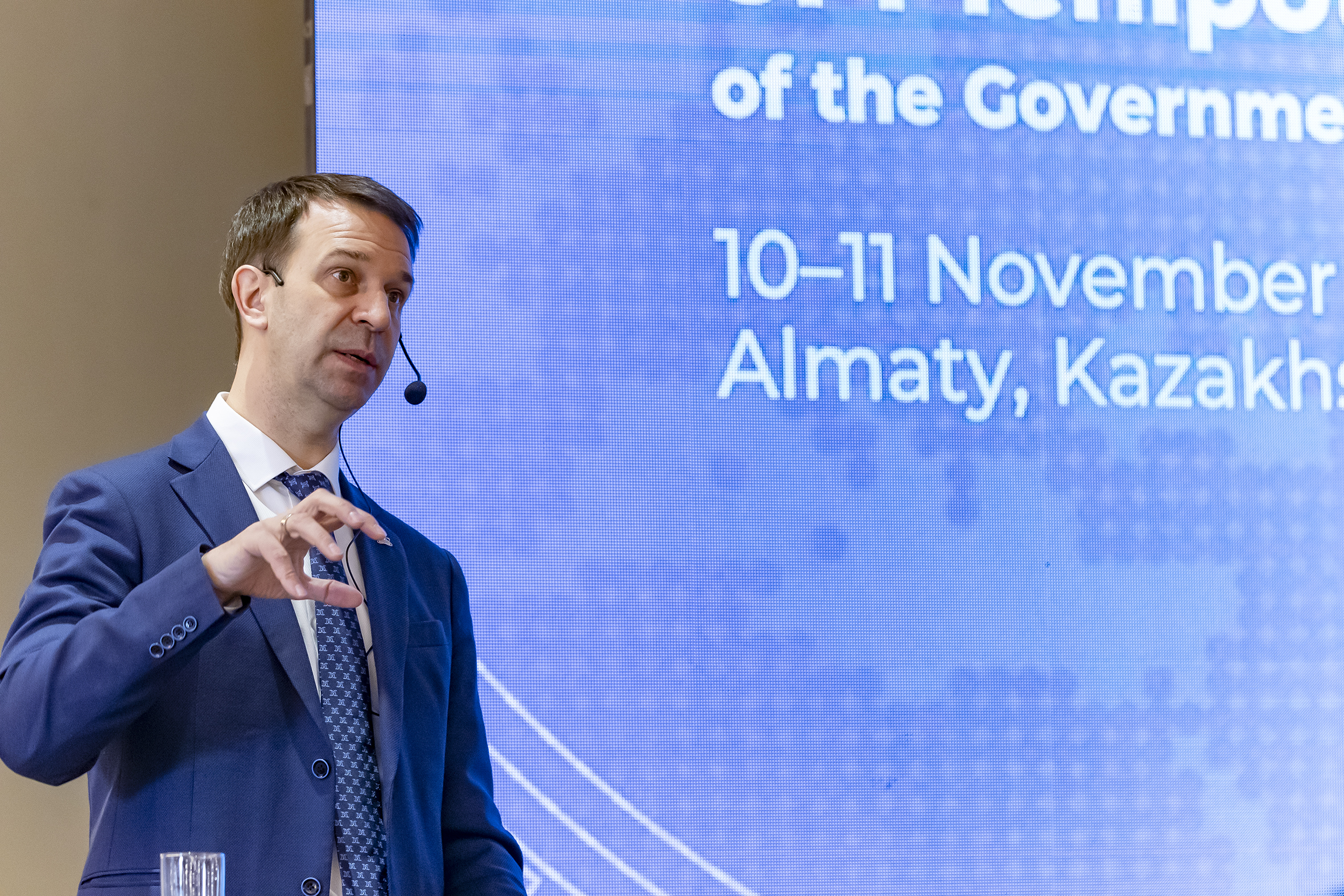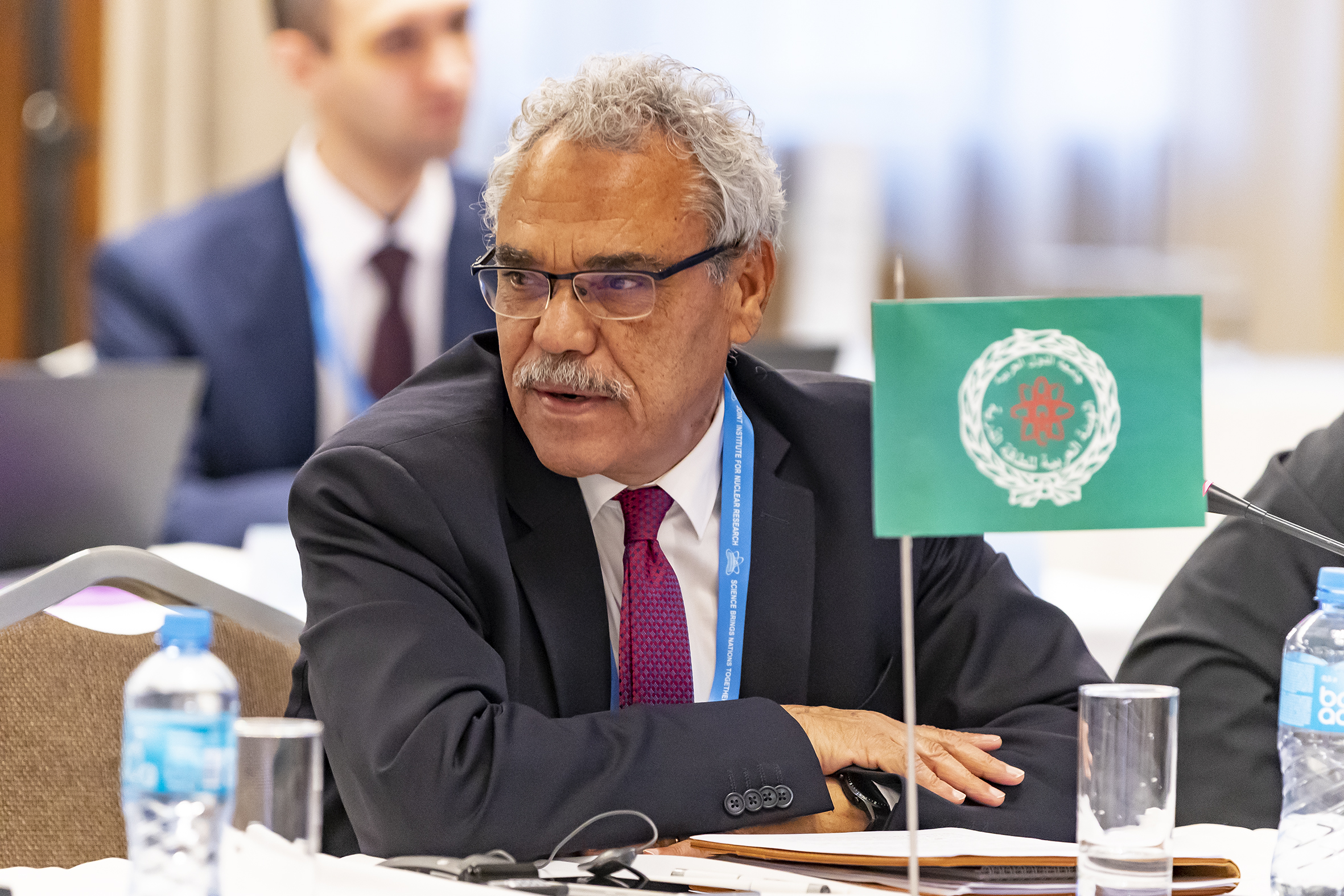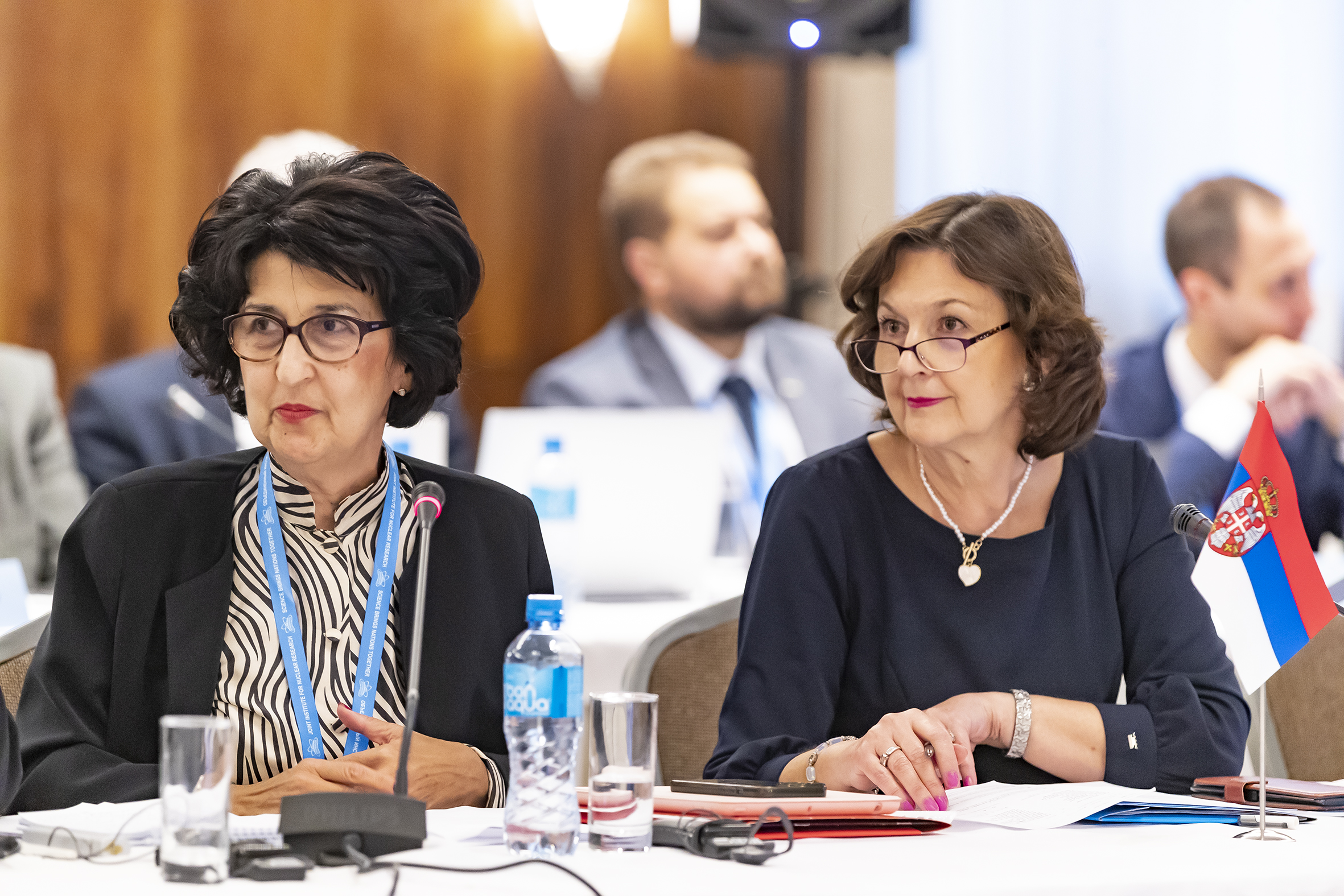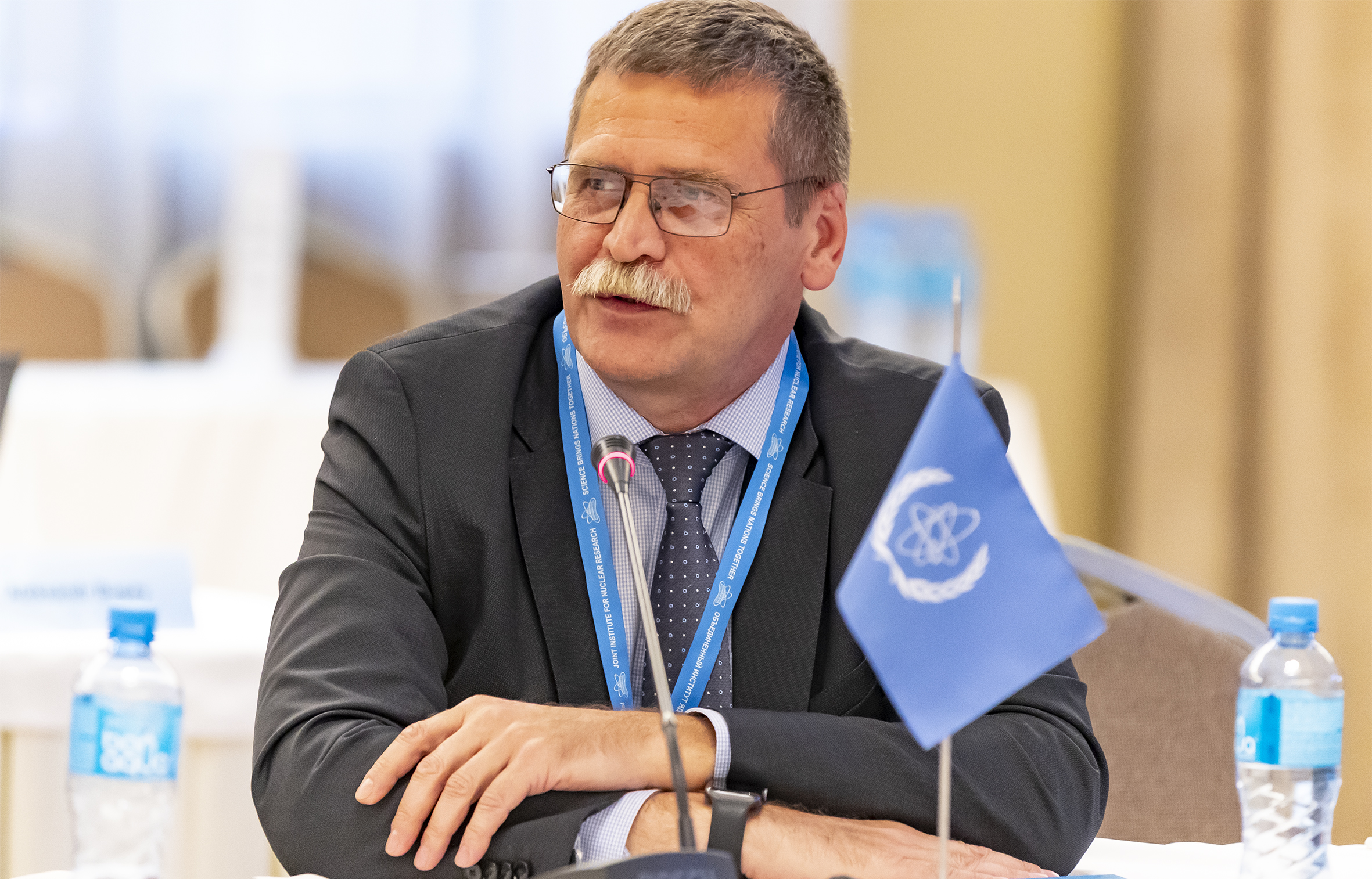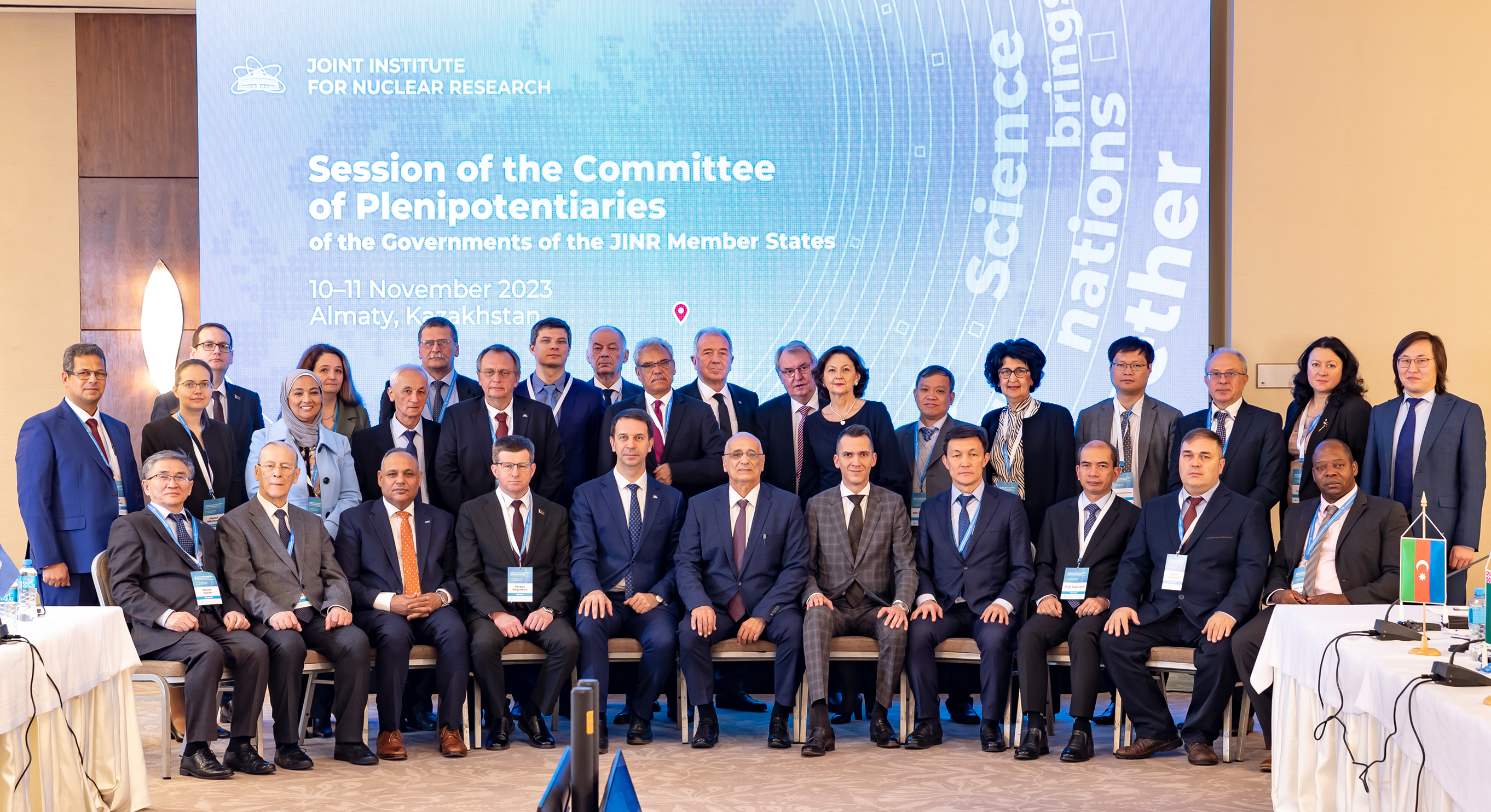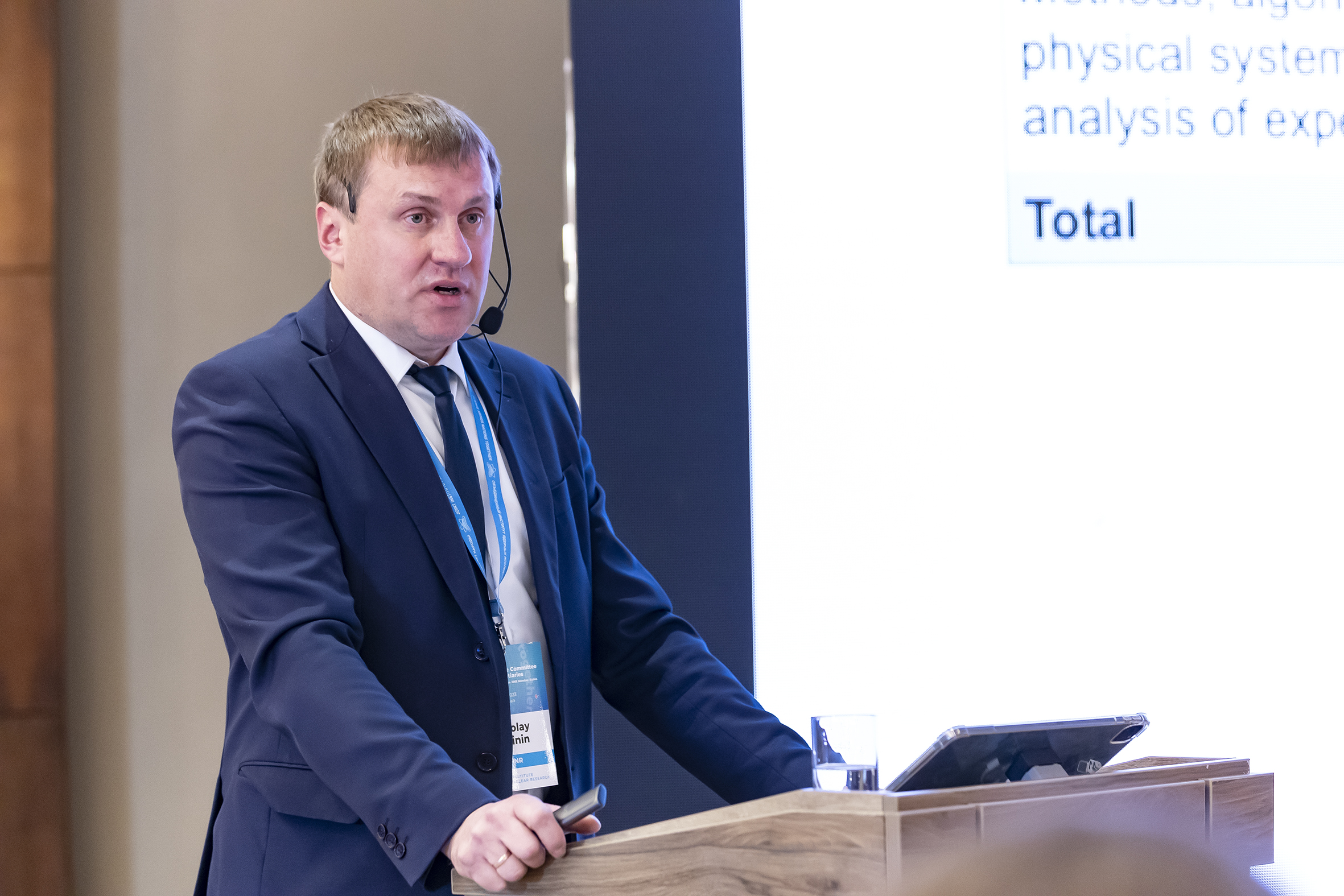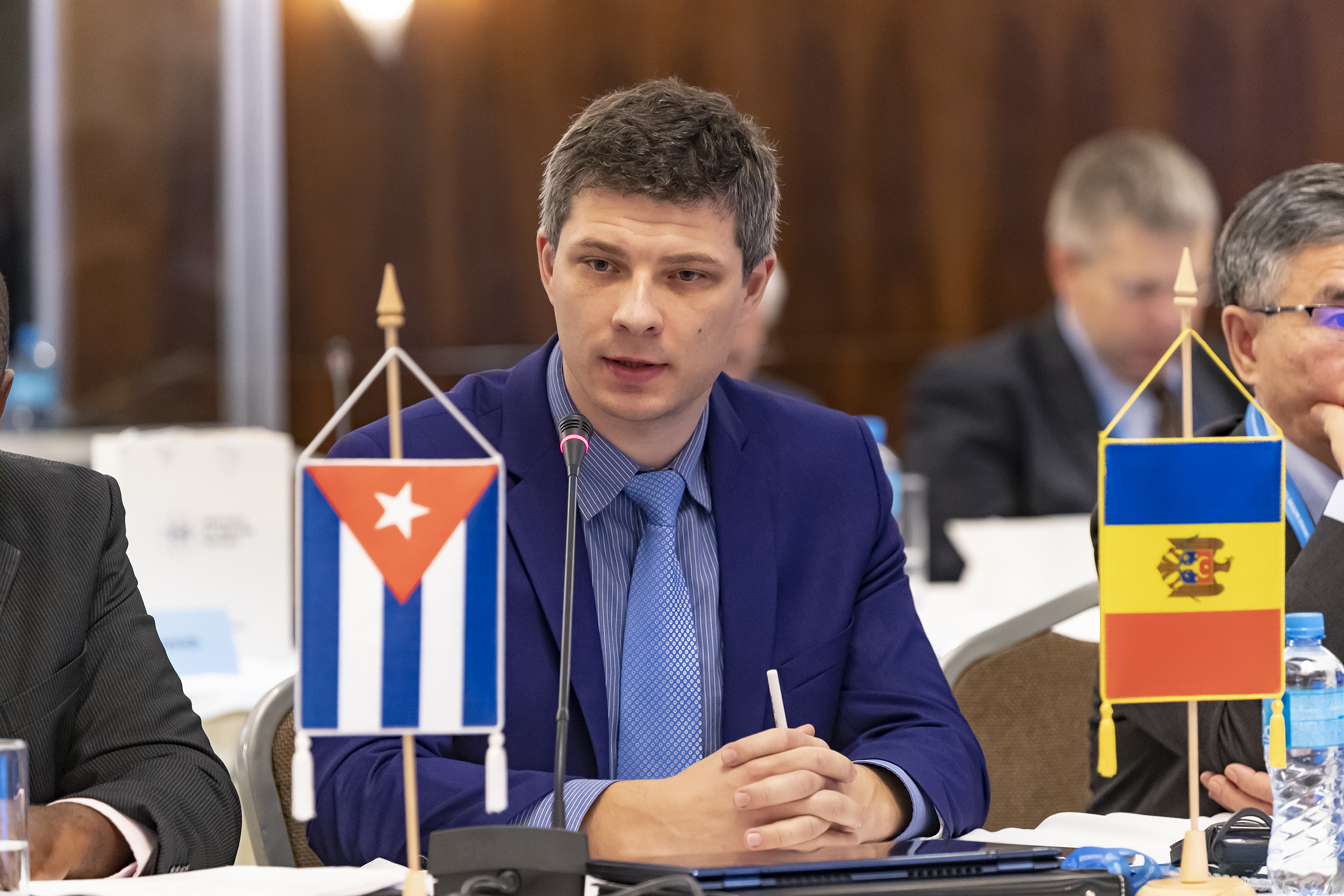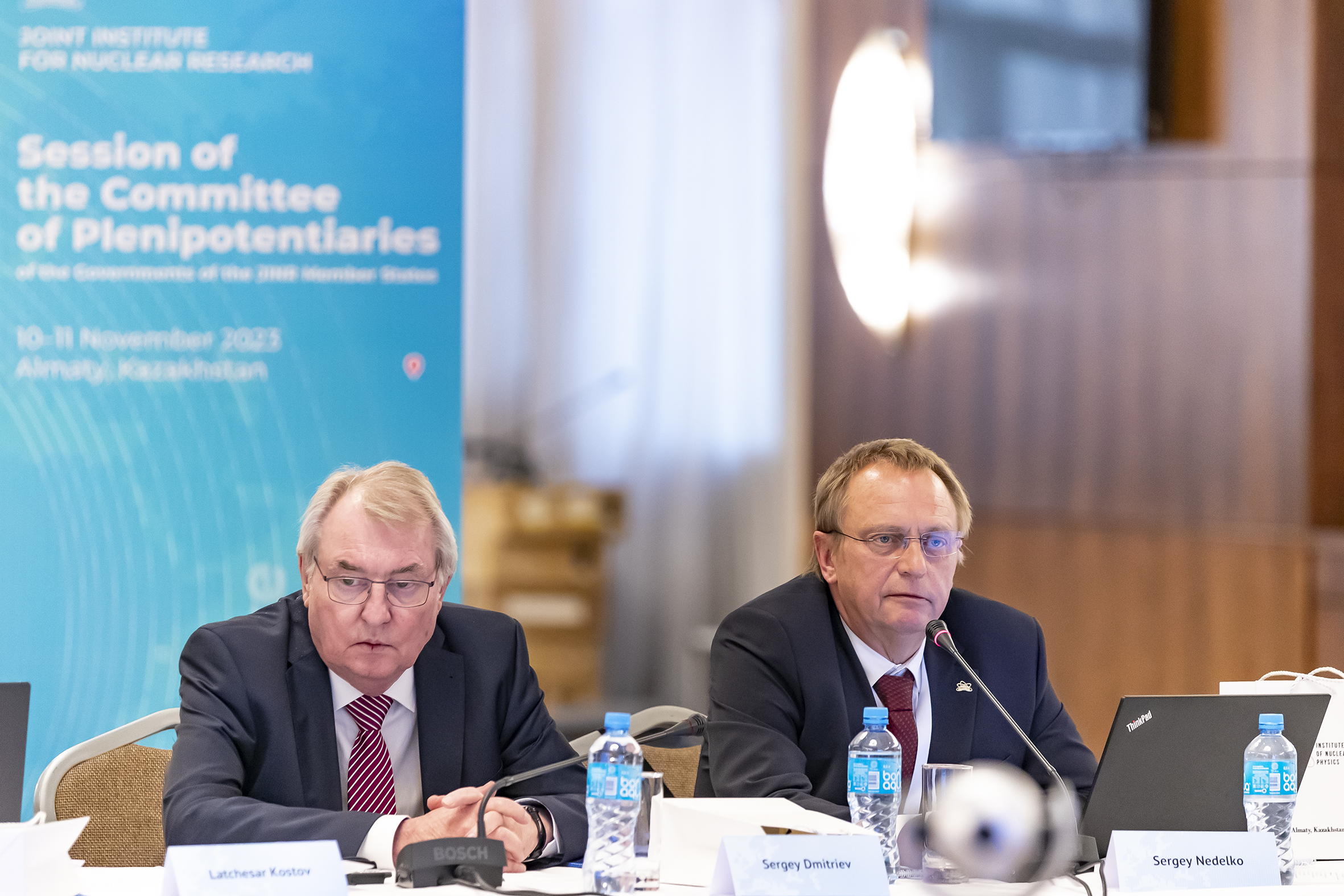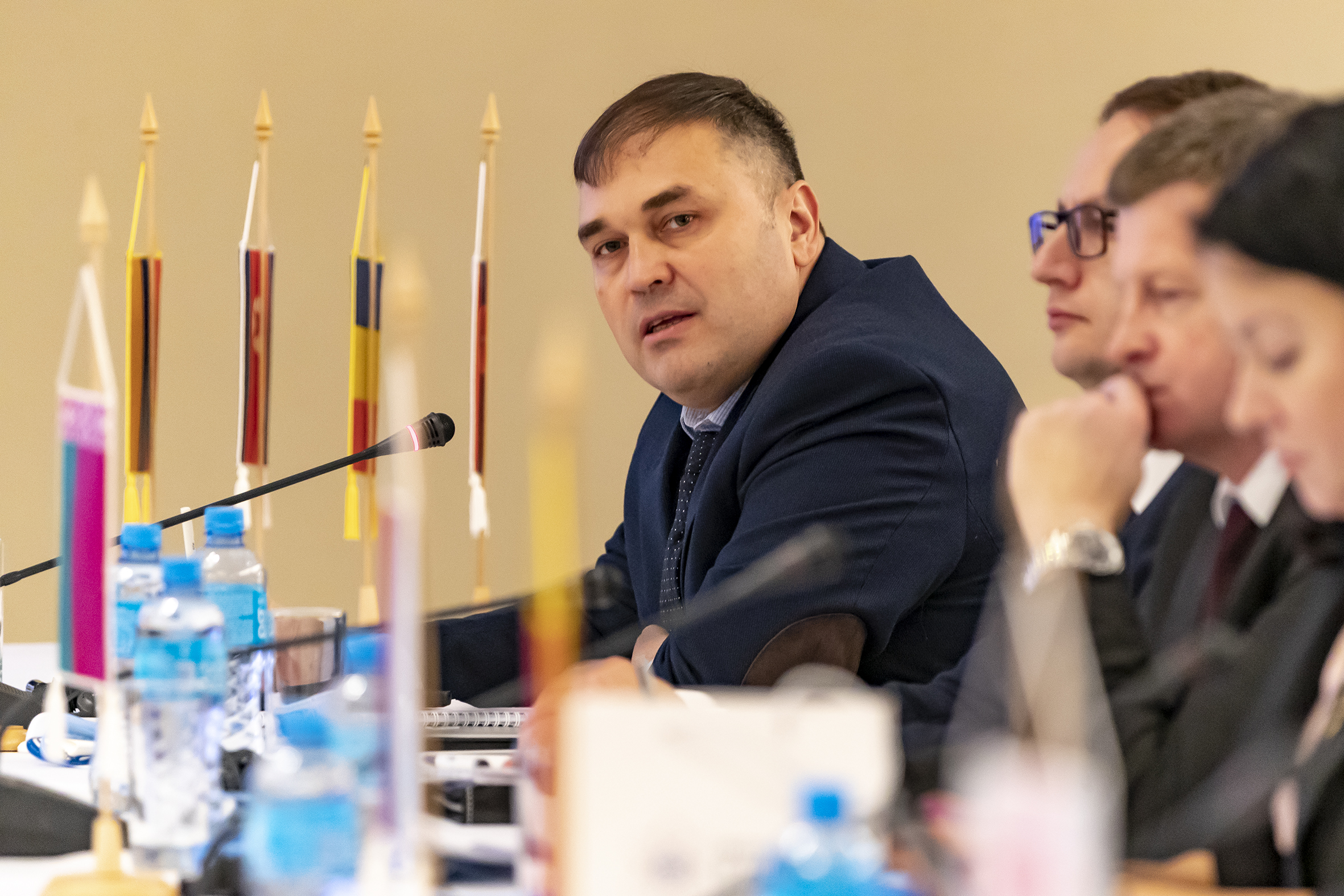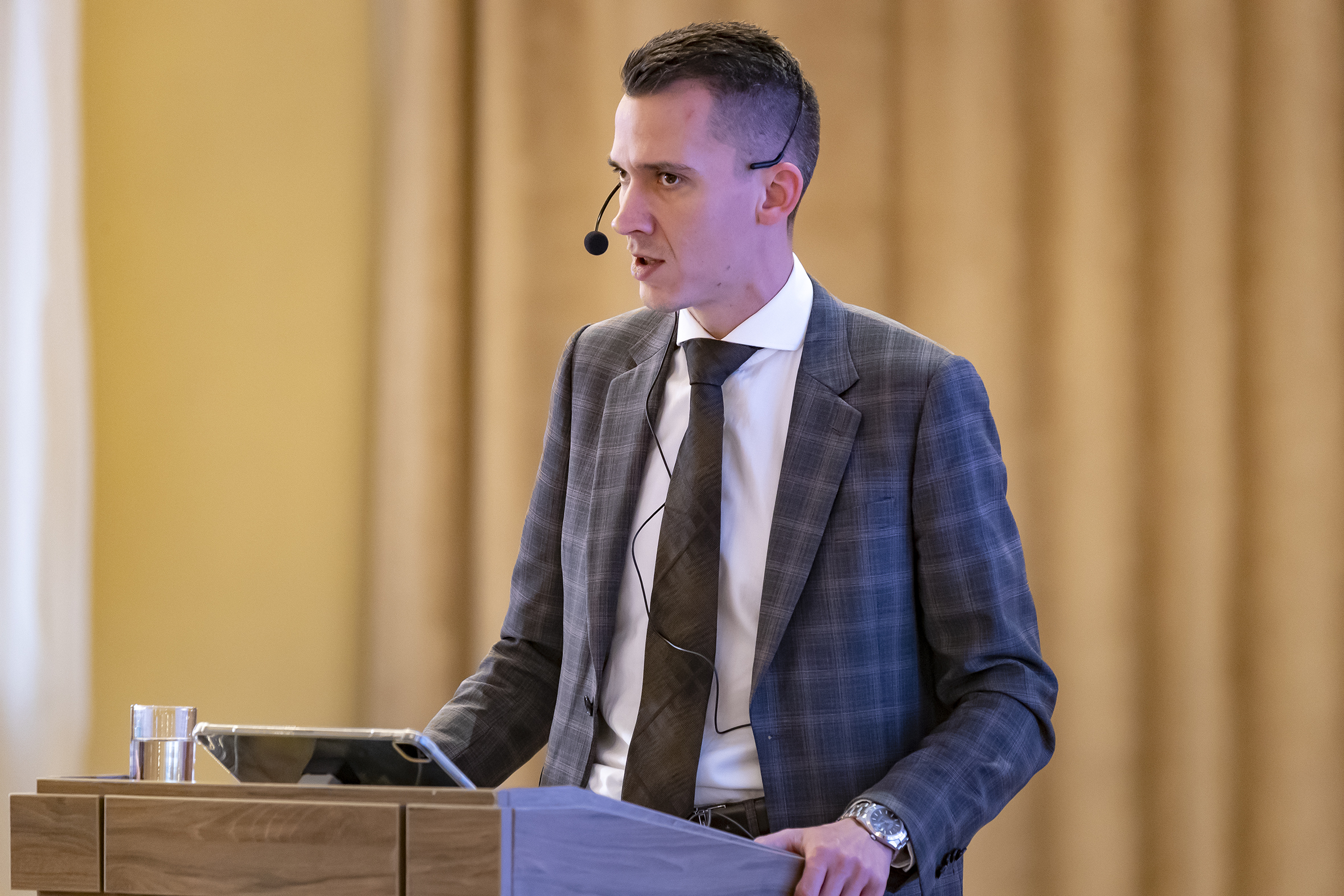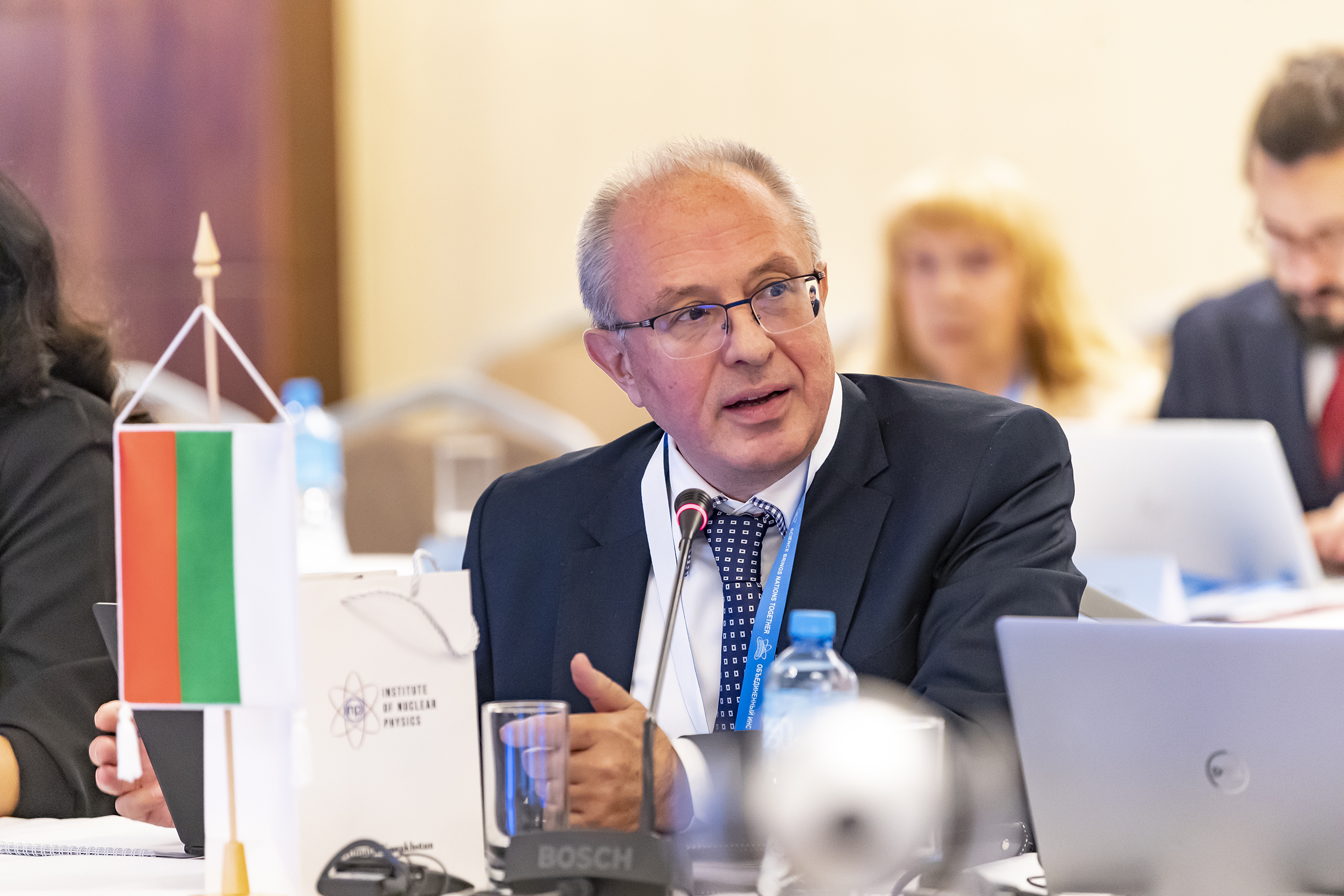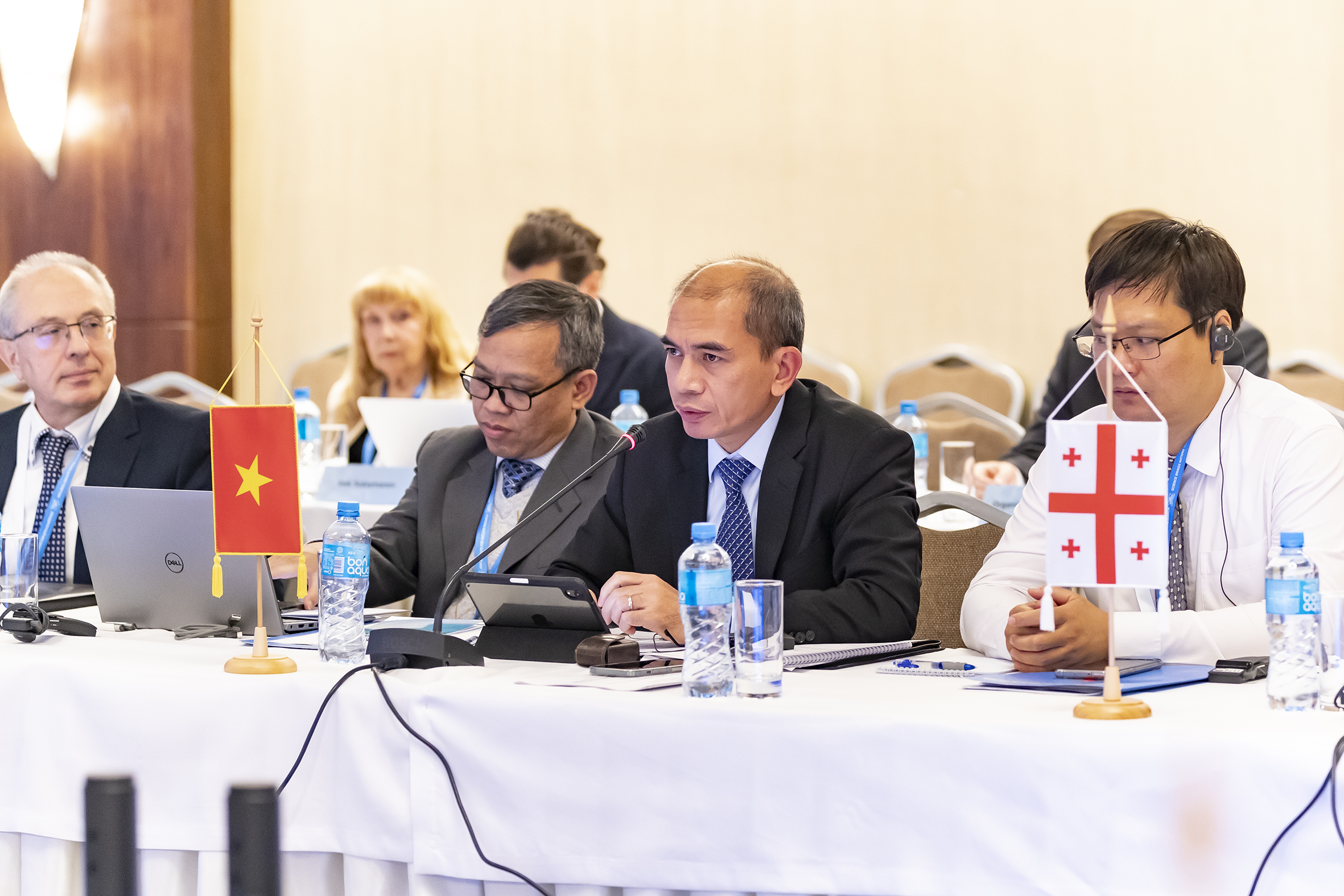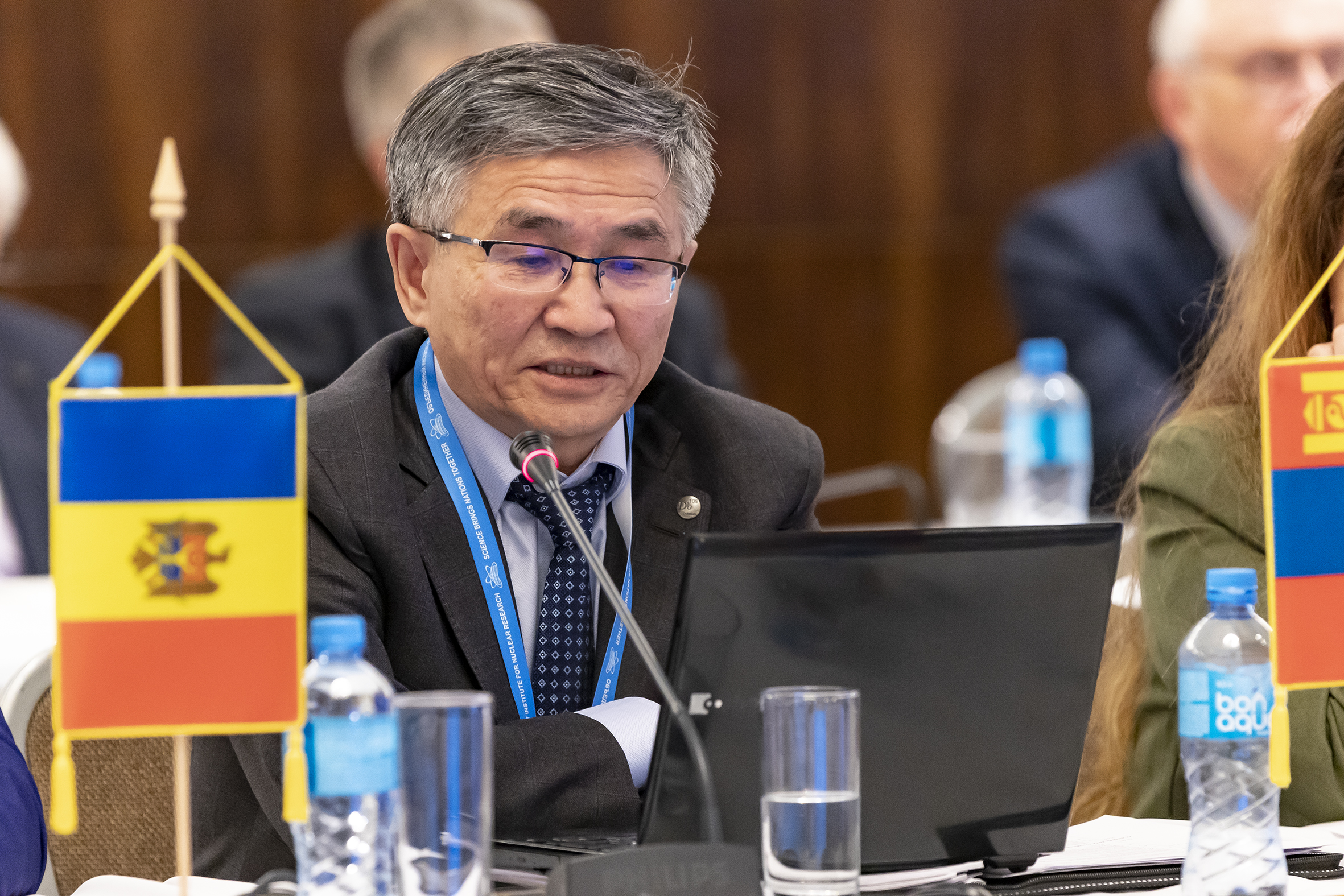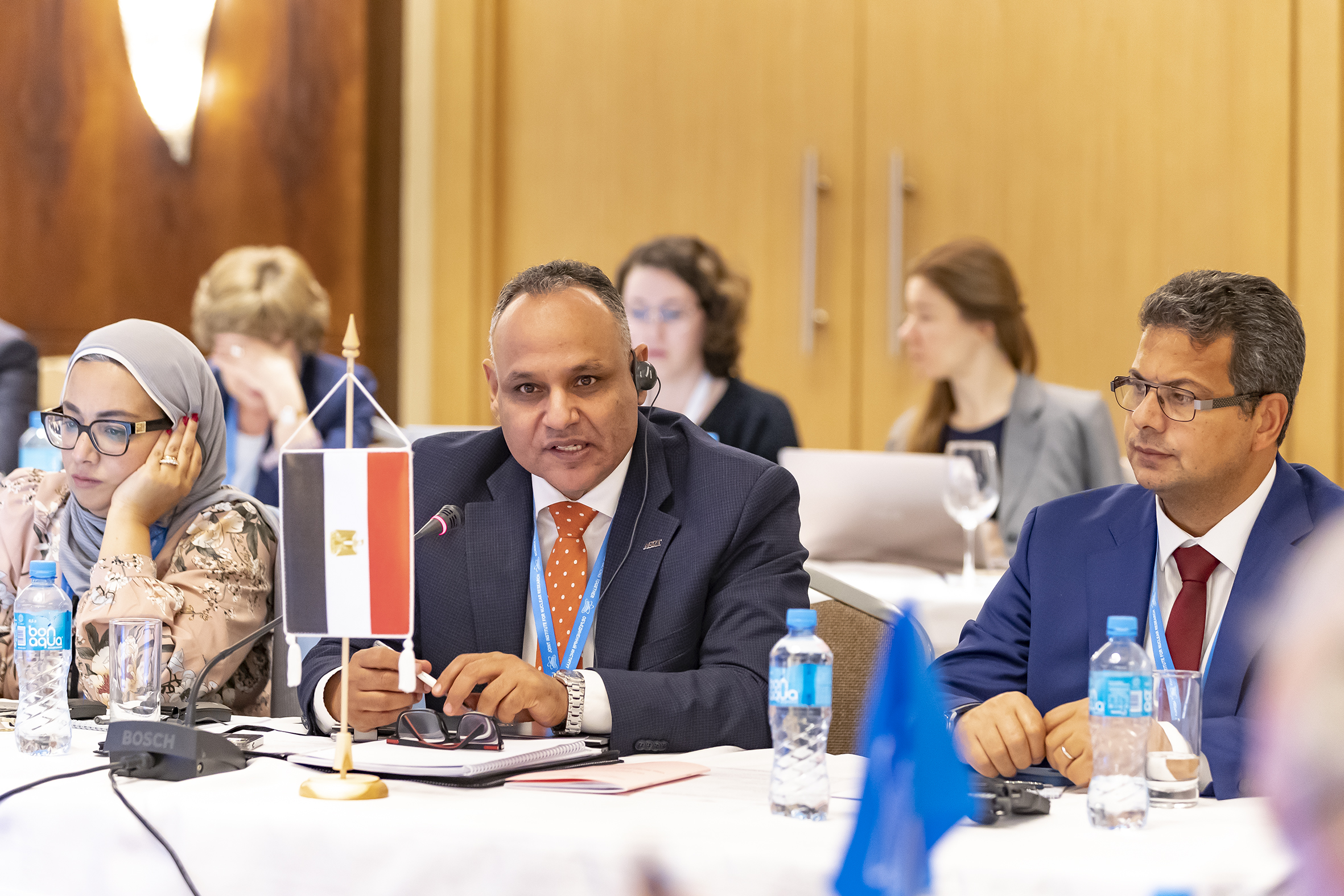Results of CP JINR session: new Seven-Year Plan approved
Media, 13 November 2023
On 10-11 November, a session of the Committee of Plenipotentiaries (CP) of the Governments of the JINR Member States took place in Almaty. Arsen Khvedelidze, Plenipotentiary Representative of the Government of Georgia in JINR, chaired the session. Together with Members of the CP JINR, representatives of Italy, Mexico, Serbia, South Africa, as well as the Arab Atomic Energy Agency, and the International Atomic Energy Agency took part in the event. Following the results of the session, the CP JINR approved the presented Seven-Year Plan for the Development of JINR 2024 – 2030 that had been previously approved by the Scientific Council and the Finance Committee of JINR.
CP JINR Chairman Arsen Khvedelidze highlighted that the current session stood out from the previous ones. “The previous seven-year period focused on strengthening all JINR-based experiments and formed a solid basis for future science development in Dubna,” he commented. “This basis will allow the Institute to play a special role in strengthening science and technology development in the JINR Member States. In the end, this is exactly what attracts these countries to JINR. The peculiarity of Dubna is that it strives not to concentrate science in one place, but to develop science in many places. No other scientific organization cares so much about the interests of its member states. Such attitude is the highest form of cooperation.”
General Director of the Institute of Nuclear Physics of the Ministry of Energy of the Republic of Kazakhstan and Plenipotentiary Representative of the Government of Kazakhstan in JINR Sayabek Sakhiyev welcomed the participants of the guest CP JINR session on behalf of its organizers.
“Scientists and engineers from Kazakhstan participate in almost all JINR flagship projects. At the same time, the republic itself receives a lot of specialists thanks to the training personnel programmes in Dubna. It is not just about accelerator technologies that are traditionally in demand in our country. With the help of cryogenics specialists trained in Dubna, we plan to launch a source of ultracold neutrons with the highest intensity in the world by 2026 and become the leader in this field. JINR allows Kazakhstan, together with other JINR Member States, to be at the forefront of science. The new JINR Seven-Year Plan sets the brisk pace and fully corresponds with the 21st century,” he commented on the CP session held in Kazakhstan.
The Plenipotentiary Representative of the Government of Kazakhstan in JINR also added that Kazakhstan is currently considering the creation of a nuclear power plant in the Republic. “Being a nuclear physicist, I believe that nuclear energy and, possibly, thermonuclear fusion will play a key role in the future. To be ready for it and also solve a number of nuclear energy tasks, we already have 145 highly qualified specialists that have been trained during the JINR-Kazakhstan double degree programme to prepare bachelors and masters,” Sayabek Sakhiyev highlighted.
“The JINR Member States are actively developing science. Most importantly, more and more young specialists from the JINR Member States join the Institute, and the interest of young scientists in JINR is growing. Therefore, the main challenge of the upcoming seven-year period is to keep the pace and attractiveness of the Institute. We face the difficult task of finding a balance between science and infrastructure development, attracting young scientists to Dubna, and the simultaneous development and growth of the science level in all JINR Member States,” JINR Director Grigory Trubnikov outlined the tasks of the future seven-year period.
Results of concluding seven-year period
JINR Director Grigory Trubnikov started the work programme of the session with his report on JINR’s results in 2017-2023.
“We have achievements to be proud of, and all JINR Member States can see their contribution to the impressive scientific results that the Institute is reporting on today. These results have been obtained by an international big team, each JINR laboratory has international groups. All JINR Member States show excellent results in scientific publications. A very good pace has been gathered in the defence of dissertations,” said Grigory Trubnikov, analysing the results achieved over seven years.
The Institute keeps extending the orbit of cooperation, strengthening existing international cooperation and establishing new ties with strategic partners. This year, the Institute has signed agreements with the Chinese Academy of Sciences and the Ministry of Science and Technology of the People’s Republic of China, the National Council for Science and Technology of Mexico (CONACYT), as well as the National Academy of Sciences of Kazakhstan. Joint JINR-China and JINR-Mexico Coordination Committees have been formed. The JINR-India cooperation has received a new impetus – a JINR-India scientific workshop was held, in which more than 150 scientists participated. This year, JINR representatives have made several visits to Pakistan and Brazil. In early December, the JINR Directorate is going to visit the Arab Atomic Energy Agency (AAEA) in Tunisia. In addition, in order to develop cooperation in 2023, meetings with UNESCO leaders have been held and a delegation from Oman has visited JINR. JINR keeps strengthening ties with the International Atomic Energy Agency (IAEA), a very important strategic partner of the Institute.
JINR Director highlighted that over past seven years the Institute achieved impressive results both in the development of the large research infrastructure of JINR and scientific experiments based on it, despite a number of external difficulties.
The Laboratory of Theoretical Physics at JINR continues developing research work in four main fields – particle physics, nuclear physics, condensed matter physics, and mathematical physics. Grigory Trubnikov noted that BLTP became an effective basic platform for all flagship projects of the Institute as a result of the past seven-year period. The Laboratory is the leader in the number of publications at the Institute. Thus, more than 2,100 scientific papers and 1,000 conference proceedings have been published in peer-reviewed journals in 2017 – 2023. More than 50 international conferences and 17 schools for students have been held.
The construction of the main project of the Laboratory of High Energy Physics at JINR – the NICA Accelerator Complex – is 98% complete. Work is under way to equip the Complex with engineering systems and to assemble the collider ring in the tunnel, which is planned to be completed by mid-2024. Work on adjusting the beam circulation in the collider is scheduled for the end of next year. International collaborations between hundreds of scientists from dozens of countries working on the MPD, SPD, and BM@N Experiments at the NICA Complex have been established and are developing. Not so long ago, ARIADNA, the applied research complex at NICA, has been launched and is already showing interesting and important results.
Researchers at the Laboratory of Nuclear Reactions at JINR are working on the construction of the DRIBs-III Heavy Ion Accelerator Complex. One of the remarkable results achieved at FLNR at JINR in the current seven-year period was the commissioning of the Superheavy Element Factory. The U-400M Complex, which has been undergoing modernisation for three years, is being prepared for launch in late 2023 – early 2024. Along with the accelerator modernization at FLNR at JINR, the laboratory actively put into operation new experimental facilities. These include the DGFRS-2 Gas-Filled Recoil Separator for studying the properties of superheavy elements, the GRAND Separator for experiments in nuclear mass spectroscopy of superheavy elements and studying the chemical properties of SHEs, and the RIBs Channel at the U-400M Accelerator for studying the structure of exotic nuclei near the neutron stability line.
Over the past six years, researchers have obtained more than 240 new superheavy element formation events at the SHE Factory, studied the properties of 40 isotopes, and discovered seven new isotopes: lawrencium-264, moscovium-286, darmstadtium-275 and 276, hassium-272, seaborgium-268, and livermorium-288. New decay modes for dubnium-268 and roentgenium-279 have been obtained. In 2023, FLNR researchers started work on obtaining high intensities of titanium and chromium ions for experiments on the synthesis of elements 119 and 120.
The Baikal-GVD Collaboration installed 3,528 optical modules of the Baikal Deep Underwater Neutrino Telescope at the end of 2023, the effective volume of the facility approached the value of 0.6 km3. This makes the Baikal-GVD Telescope the largest neutrino telescope in the Northern Hemisphere. Employees of the Laboratory of Nuclear Problems continue to participate in international experiments on the properties of neutrinos: Daya Bay, JUNO, NOvA, etc.
The Multifunctional Information and Computing Complex of the Laboratory of Information Technologies at JINR for data storage and analysis continues to develop actively. In 2023, the performance of the Govorun Supercomputer has been increased to 1.7 petaFLOPS, the DIRAC Cloud Distributed Computing Platform is expanding. In total, over the past 6 years, more than 950 studies on the software of JINR experiments and about 700 papers as part of international collaborations have been published at MLIT at JINR.
Employees of the Laboratory of Neutron Physics continue to conduct research in the field of crystallography, magnetostrictive materials, neutron radiography, etc. Works in fundamental nuclear physics using secondary neutron sources at the IREN Facilities and as part of the TANGRA project are also carried out. Life sciences are an important element of the research programme.
During the current seven-year period, the Laboratory of Radiation Biology has done a number of studies on improving the efficiency of radiation therapy. The laboratory researchers are also developing samples for panelling the walls of the crew quarters of future space stations and working in the field of dosimetry.
The JINR University Centre annually organizes dozens of educational events: scientific schools, student internships, academic exchange programmes.
Special attention should be paid to the large number of obtained qualifications by the Institute’s employees. Since 2019, more than 80 dissertations have been defended, including 64 theses of candidates of sciences and 17 doctoral dissertations.
Plans for the next seven years
The key event of the CP session was the approval of the Seven-Year Plan for the Development of JINR for 2024–2030. At the session, JINR Director Grigory Trubnikov presented the project of the new seven-year period, developed in accordance with the JINR Long-Term Development Strategic Plan up to 2023 and Beyond.
The plan covers a wide range of activities and research areas: the development of a large research JINR infrastructure, elementary particle physics and high-energy heavy ion physics, nuclear physics, condensed matter physics, radiation research in life sciences, theoretical physics, information technology, physics and technology of charged particle accelerators, etc.
The main aim of the new seven-year period is to establish a long-term scientific research programme and increase the intellectual human capacity, effectively supported by infrastructure and financial resources.
The NICA Accelerator Complex at the Joint Institute is currently under construction. Experiments with extracted beams at the BM@N Facility will be continued, and the MPD Experimental Facility at the collider will be put into operation. The first test beam launch in the NICA Collider is scheduled for early 2025. The JINR Director noted that during the seven-year period, the Technical Design of the SPD (Spin Physics Detector) project should be adopted and the first stage of construction of the experimental facility should be completed. There are plans to actively develop and conduct applied innovative research as part of ARIADNA collaborations, including the development of a user programme for applied research at the NICA Complex based on three specialised channels.
The synthesis of new elements of the Mendeleev’s Periodic Table, the study of their properties by nuclear spectroscopy methods, as well as their chemical properties, the study of the mechanisms of various nuclear reactions leading to the formation of new, previously unknown nuclei remain priority scientific directions of JINR. Research on the structure of light nuclei far from stability will be continued, as well as the development of the infrastructure necessary for this studies. Together with the reconstruction of the U-400M Accelerator Complex, the building and development of the DC-140 Accelerator Complex will be continued. The tasks of the complex are related to research in the field of solid state physics, surface modification of various materials, as well as the production of track membranes and testing the radiation resistance of electronic components.
There are plans to create a class 1 radiochemical laboratory, which will be equipped with a powerful electron accelerator and will allow working with highly active materials, including the manufacture and regeneration of targets for the JINR Superheavy Element Factory, as well as the production of radioisotopes for scientific, radioecological, and medical applications. These new scientific infrastructure facilities, together with the MSC-230 superconducting cyclotron for nuclear medicine being created, will become the basis for the Interlaboratory International Innovation Centre for Nuclear Physics Research. Its main tasks will be the development of technologies and methods in the field of nuclear and radiation medicine, radiation material science, as well as training staff for the Member States.
JINR plans to commission two new clusters of the Baikal-GVD neutrino telescope annually in the next four years, in order to increase the detector volume to 1 km3. This international megascience project is capable of bringing breakthrough results in the field of multi-messenger astronomy, studying the fundamental properties of the most energetic cosmic neutrinos, indirect search for galactic dark matter, as well as being used for applied research. Now, being the largest neutrino telescope in the Northern Hemisphere, Baikal-GVD acts as one of the key elements of the Global Neutrino Network (GNN).
A programme for the development of the spectrometer complex at IBR-2 has been made. One of the key tasks is to create a new pulsed neutron source based on the NEPTUN high–intensity pulsed neutron reactor with Np-237 in the core.
JINR scientists will continue to actively develop fundamental and applied research areas related to life sciences and condensed matter physics based on the development of an interlaboratory research programme in the Laboratory of Radiation Biology.
In the field of information technologies, further development of the JINR Multifunctional Information and Computing Complex is planned, including the upgrade of the Govorun Supercomputer. The DIRAC distributed platform will serve to support collaborations of the NICA MPD, BM@N, and SPD experiments, as well as the Baikal-GVD neutrino telescope. One of the central tasks in this direction is the development of the JINR Digital EcoSystem platform for the integration of existing and promising services to support scientific, administrative, financial and economic activities, as well as maintenance of the engineering and IT infrastructure of the Institute.
JINR plans to expand cooperation with partner organizations, increase staff for the operation of the Institute’s facilities. To increase the number of employees from the Member States is another important task.
“The Seven-Year Plan for the Development of JINR is harmonised with the world science development plan,” Grigory Trubnikov said. “This seven—year period is the multiplication of human capital and the time of the “harvest” of the work of all experimental facilities.”
About other results of CP JINR session
In May of this year, the UN proclaimed the next decade 2024 to 2033 as the International Decade of Sciences for Sustainable Development. The Joint Institute is one of the general partners of the event. The JINR Director highlighted that it was a great honour for the Institute and the recognition of the organization in the international scientific landscape. It is noteworthy that the priority areas of research under the UN plan coincide with JINR scientific areas.
The meeting participants reviewed the JINR draft budget for next year presented by Head of the Department of Budget and Economic Policy Nikolay Kalinin. Following the results of the meeting, the CP session approved the JINR budget for 2024. Its structure will be updated, become multilevel, and contain an in-depth presentation of expense items.
The results of the JINR Finance Committee meeting held a day earlier were presented by its Chairman, Deputy Minister of Science and Higher Education of the Russian Federation Andrey Omelchuk. As a result, the CP participants approved the contributions of the JINR Member States for 2024, as well as the indicative contributions of the Member States for 2025 and 2026. Besides, CP supported the submitted proposal to instruct the JINR Directorate to prepare the final version of the draft updated Rules of Procedure of the JINR Finance Committee and CP Committee for their subsequent consideration at the meeting of the JINR Finance Committee and the CP session in March 2024.
The CP participants considered and adopted the JINR Topical Plan for 2024, which acquired a new structure. JINR Chief Scientific Secretary Sergey Nedelko, who led the work on updating the JINR Topical Plan, spoke about the essence of changes. So, the main structural element of the annual JINR Topical Plan becomes a scientific project. Large research infrastructures, namely NICA, Baikal-GVD, Dribs-III, IBR-2, and MICC, are placed in a separate block divided into 12 scientific projects. This makes it possible to adhere to strict planning and precise execution of assigned tasks. The second block of the JINR Topical Plan consists of 46 research projects on eight research areas. Here, as before, the topic serves as a major structural element, and a scientific project, usually designed for five years, becomes the main one. The third block of the JINR Topical Plan includes activities accompanying JINR’s scientific activities, namely scientific, organizational, scientific and educational work.
During the session, recommendations of the 133rd and 134th meetings of the JINR Scientific Council were considered and approved as well.
On the recommendation of JINR Director Grigory Trubnikov, the Committee of Plenipotentiaries elected Zeblon Vilakazi (University of the Witwatersrand, Johannesburg, South Africa) as a member of the JINR Scientific Council. Professor Vilakazi is an outstanding scientist in the field of heavy ion physics. He has worked at CERN and has been cooperating with JINR fruitfully for a long time, thanks to which he is well acquainted with the Joint Institute.
The CP participants approved the updated regulations on the annual JINR prizes awarded for the best scientific, scientific and methodical, scientific-technical applied works. In the field of theoretical physics, two second prizes will be awarded instead of the one currently awarded. In addition, participants decided to stop giving encouragement prize and introduce the concept of third prizes in each of the directions.
The Committee of Plenipotentiaries decided to hold a regular session on 22 – 23 March 2024. The next meeting of the Finance Committee will take place on 21 March 2024.
